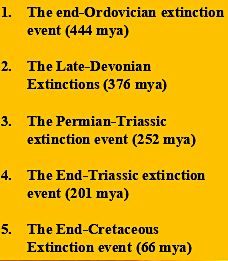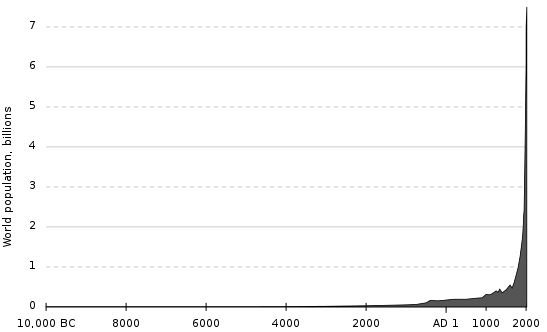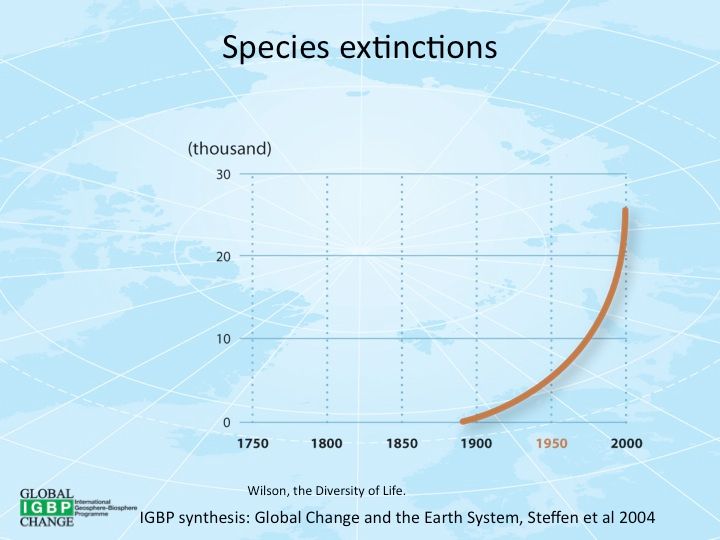Climate Change, Mass Extinctions and the Age of Homo sapiens
At our last meeting Scott Bennett gave an inspiring talk entitled “Climate Change, Mass Extinctions and the Age of Homo sapiens”
The aim of the talk was to try and observe on a geological time scale the significance of the effects of humans. He was to argue that human civilisation is now at a crossroads.
There have been five mass extinction events in the past when a large percentage of life disappeared completely. Knowledge gained from the study of these events has led to the following insights:
- Speed and/or magnitude of an event and complexity of a life-form all contribute to vulnerability to extinction.
- The worst extinction events usually have multiple triggers/ causes.
- Triggers such as asteroids and flood basalt events are merely the first step in a chain reaction of cataclysms that drive major extinction events.
- A change in the earth’s carbon cycle, greenhouse effect and global temperature are a key feature of every major extinction event
- Climate and chemistry cycles on earth will take millennia to find a new equilibrium after such events whilst biodiversity can take millions of years to recover.

Five mass extiction events
These extinctions were all caused by natural events but the sixth mass extinction, which is now under way, is being caused by a biological force which is human civilisation. The rise of Homo sapiens was gradual but with the onset of the Holocene and stability of the climate came the first changes as agriculture was born. Civilisations began to be developed and eventually began the road to where we are now. With the industrial revolution mechanisation transformed the way of work. Health and nutrition improved, housing improved as did modern medicines. The death rate declined and the population increased markedly, such that the world population at 900 million in 1800 had reached 7.7 billion by 2019.

World human population (est.) 10,000 BC–2000 AD by El T Wiki Commons
Our human civilisation is hurtling out of control. Wealth, for some parts of the world, has increased vastly which requires vast amounts of natural resources. So much so that in 2019 we extracted 105 billion tonnes of natural/mineral materials. This rate cannot continue as to do so we would require 1.6 earths to meet our needs. We extract far too much , we disrupt the surface of the planet, add pesticides, herbicides, fungicides and fertiliser to the land all of which is altering the chemistry of land, air and water. It has been estimated that world-wide the deliberate annual shift of sediments by humans is 57,000 million tonnes which is about three times that of rivers and oceans. so humans are a geological force.
We are thus having a marked effect on the only planet we have to inhabit. Atmospheric carbon dioxide levels have increased from 280ppm in 1880 to 415ppm now and has not been this high for millions of years. Related to the increase in CO2 is an increase in ocean acidity which can have an effect on those organisms with hard shells. Due to the greenhouse effect of CO2 global temperature has increased by 1.02C since 1880 with the 19 hottest years occurring since 2000.
In addition to our effects on the carbon cycle we are also having an effect on the nitrogen cycle. Humankind’s increasing use of reactive nitrogen in fertilisers, plastics, explosives, among many other products, leads to problems as most of the nitrogen is leaked back into the environment. This has many and varied effects with high costs to the environment, people and in monetary terms.

Species extinctions by Owen Gaffney IGBP synthesis: Global Change and the Earth System Wiki Commons
So what can be done about the effects we humans are having on the environment? The worst case scenario can be avoided but it will take effort and will be expensive but the alternative cannot be allowed to happen. Therefore the following are ways in which catastrophe may be averted:
- The earth must not exceed 1.5C above pre-industrial levels
- We must reach net zero CO2 emissions before we use up the carbon budget
- Global emissions must decrease by 45% by 2030
- Net zero emissions must be reached by 2050
- Possibly will need to maintain negative carbon emissions for the rest of the century.
In order to achieve these outcomes it is up to everyone from governments to the ordinary person to ensure that requirements are achieved. Business as usual cannot go on. There should be more talking about climate change in the community, in news papers, national news and at government and international levels. Pressure must be put on politicians to get to grips with the crisis and peaceful direct action is going to play it’s part.